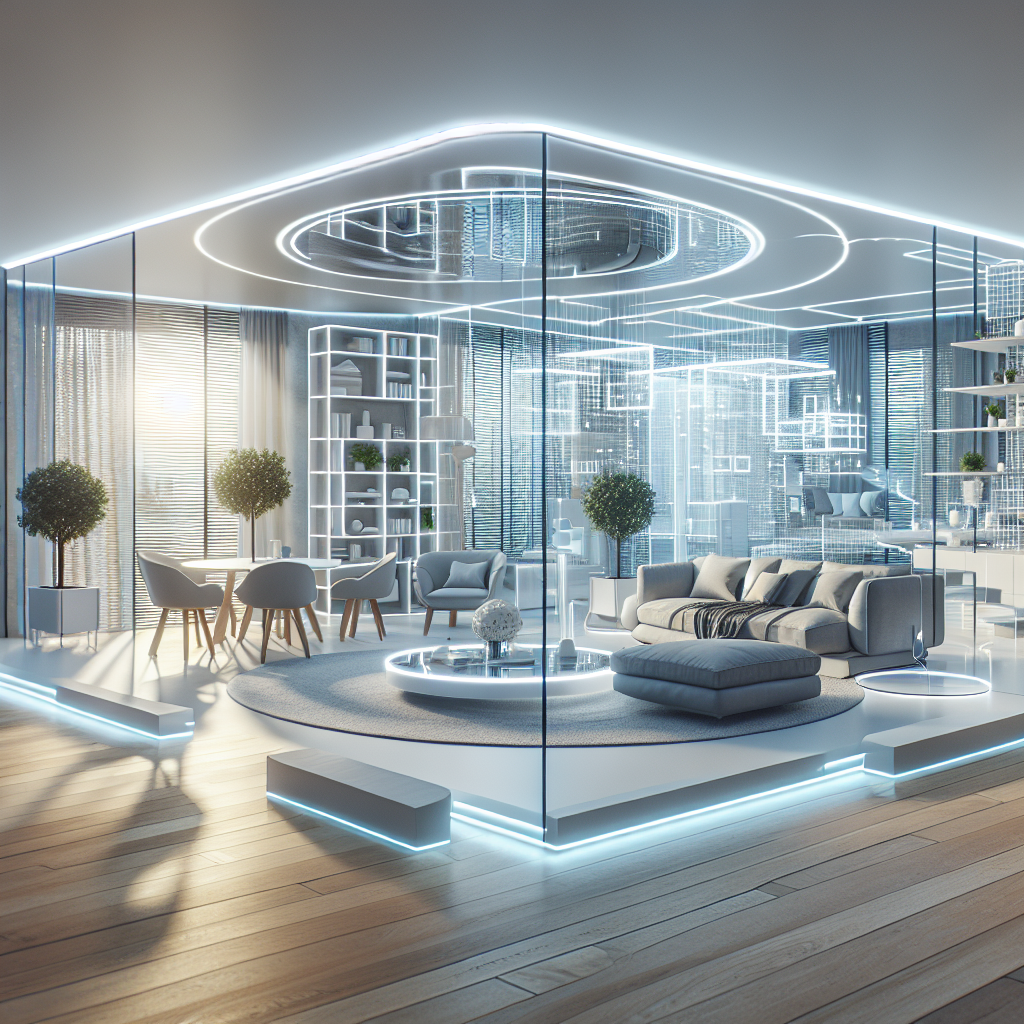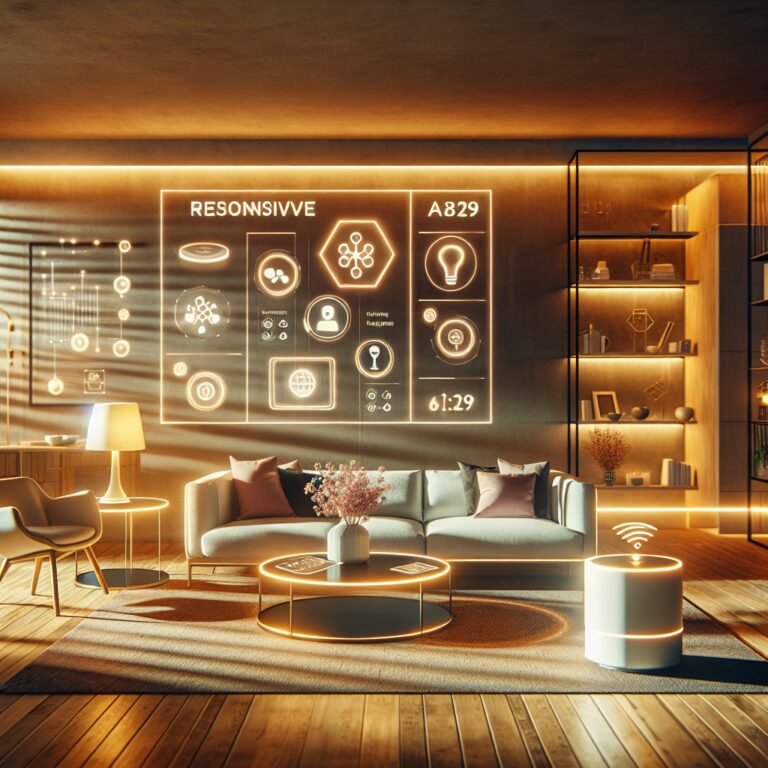Imagine walking into your home after a long day, and without a word or touch, the lights adjust to your mood, the temperature shifts to your preference, and your favorite music begins playing softly in the background. This isn’t science fiction—it’s the emerging reality of responsive architecture, where our living spaces become active participants in our daily lives.
*Our environments are evolving from static containers into dynamic ecosystems that learn, adapt, and respond to human needs.*
The convergence of parametric design—where mathematical algorithms generate complex, adaptable structures—with sensor technology and artificial intelligence is transforming how we conceptualize inhabited space. These responsive environments don’t just react; they anticipate, learn, and evolve alongside their occupants, blurring the boundary between the built world and the natural intelligence we’ve previously reserved for living beings.Imagine stepping through your front door after a long day, and your home instantly recognizes not just your presence, but your mood. The lights dim to a calming blue, your favorite unwinding playlist begins at just the right volume, and the temperature adjusts to your perfect comfort level. This isn’t just convenience—it’s your space responding to you as intuitively as a longtime friend.
*What if the walls that surround us could do more than just stand—what if they could think, feel, and respond to our very presence?*
The Evolution of Living Spaces: From Static to Sentient
For centuries, our homes have been passive shelters—static structures designed to serve fixed purposes. But today, we stand at the threshold of a revolution where our living environments are transforming from mere physical spaces into responsive ecosystems. Smart homes represent just the beginning of this fundamental shift in how we relate to our built environment.
The concept of living spaces that can “think” goes beyond the novelty of voice-controlled lights or remotely adjustable thermostats. It encompasses a profound reimagining of architecture as something alive—spaces that learn, adapt, and evolve alongside their inhabitants.
From Automation to True Intelligence
The first generation of smart home technology focused primarily on simple automation—scheduled routines and remote control capabilities. But the future promises something far more sophisticated: genuine environmental intelligence.
This intelligence manifests through:
- Predictive systems that anticipate needs before you express them
- Adaptive environments that reconfigure based on occupancy patterns
- Sensory-rich spaces that understand emotional states through biometric signals
- Self-learning systems that continuously refine their responses to your preferences
Imagine a bedroom that detects when you’re having trouble sleeping and automatically adjusts everything from air quality to subtle background sounds that help lull you into restfulness. Or a kitchen that recognizes when you’re cooking a complex meal and offers countertop projection instructions exactly when and where you need them.
Responsive Architecture: Buildings That Breathe
The concept of responsive architecture takes intelligent living spaces beyond interior systems to the very structure of our buildings. Smart homes are evolving into comprehensively adaptive environments where walls, windows, and entire structural elements respond dynamically to both environmental conditions and human needs.
Adaptive Facades: The New Face of Buildings
One of the most visually striking manifestations of responsive architecture is the development of adaptive facades. These building exteriors function as dynamic skins rather than static barriers.
Modern adaptive facades can:
- Shift and adjust throughout the day to optimize natural lighting
- Expand or contract ventilation elements to regulate airflow
- Change transparency levels based on privacy needs or weather conditions
- Harvest solar energy while simultaneously managing heat gain
Consider the Al Bahar Towers in Abu Dhabi, where a responsive geometric facade unfolds and closes like flowers responding to the sun’s movement, reducing solar gain by nearly 50% while creating a constantly evolving architectural expression.
Optimizing for Natural Elements
Responsive buildings don’t just react to occupants—they also engage intelligently with natural elements. Advanced systems focused on sunlight and airflow optimization are creating spaces that breathe with their environment.
These buildings might feature:
- Automated skylights that adjust based on cloud cover and interior light levels
- Ventilation systems that respond to wind directions and air quality metrics
- Thermal mass elements that intelligently store and release heat energy
- Water collection systems that anticipate precipitation patterns
What’s remarkable is how these technologies can blend ancient architectural wisdom with cutting-edge sensing and automation. Roman atrium designs for natural cooling, Japanese principles for cross-ventilation, and Middle Eastern wind towers are all being reinvented through responsive technologies.
Parametric Design: The Mathematics of Living Comfort
At the heart of many responsive architecture innovations lies parametric design—a computational approach to architecture that defines relationships between elements rather than fixed dimensions. This approach allows for incredible flexibility and optimization based on multiple variables simultaneously.
Parametric Design in Living Spaces
Parametric design transforms living spaces from static environments into fluid systems capable of continuous optimization. Unlike conventional design, which tends to optimize for a single condition, parametric approaches can balance multiple competing factors in real-time.
For example, a parametrically designed living room might continuously adjust:
- Light distribution patterns based on activities and time of day
- Acoustic properties when conversation or music are detected
- Spatial divisions that subtly reconfigure based on occupancy patterns
- Temperature gradients that follow occupants throughout the space
The brilliance of parametric design is how it mediates between seemingly contradictory needs. A space can simultaneously optimize for energy efficiency, thermal comfort, acoustic quality, and aesthetic experience—shifting priority among these parameters based on contextual needs rather than forcing a single compromise solution.
The Human-Space Relationship: A Two-Way Conversation
Perhaps the most profound aspect of responsive environments is how they transform our relationship with space from occupation to conversation. User behavior and spatial automation create a feedback loop where each influences the other.
Learning Your Patterns
Future homes will observe how you use spaces—not in a surveillance sense, but as an attentive companion might learn your preferences. This behavioral understanding forms the basis for meaningful responsiveness.
Your home might notice:
- You tend to read in a specific corner during afternoon hours
- Your cooking habits change seasonally
- Certain visitors prompt different spatial arrangements
- Your movement patterns signal when you’re stressed versus relaxed
Over time, these observations enable your home to anticipate needs rather than merely reacting to commands. Imagine entering your kitchen on a Sunday morning, and finding the space has already arranged itself for your weekly baking ritual—counters cleared, recipe projected, ingredients highlighted, and your favorite baking playlist queued up.
The Psychology of Responsive Spaces
Living with responsive architecture changes not just our physical comfort but our psychological relationship with our surroundings. Research suggests spaces that anticipate our needs create profound feelings of being understood and cared for.
Consider how we naturally anthropomorphize our cars, phones, and other technologies. Now imagine a space that responds to your presence with subtle acknowledgments—lighting that “follows” you not in an obtrusive way, but like a gentle companion. These responsive elements create a sense of the space being alive and aware.
Ethical Considerations in Thinking Spaces
As with any powerful technology, responsive architecture raises important ethical questions:
- Who controls the decision-making algorithms in our most intimate spaces?
- How do we balance personalization with privacy protection?
- What happens when spaces designed for one occupant must serve multiple people with different needs?
- How might responsive architecture affect our capacity to adapt to less responsive environments?
These questions aren’t reasons to avoid advancement but rather invitations to develop thoughtful frameworks as these technologies mature. The most successful responsive spaces will likely be those that maintain human agency while offering meaningful assistance.
Living in Tomorrow’s Responsive World
The future of responsive architecture isn’t a distant science fiction—it’s unfolding around us already through the convergence of advanced materials, sensor networks, artificial intelligence, and parametric design approaches.
As these technologies mature, our concept of “home” will transform from a static possession to a dynamic relationship. Your future living space won’t just be a place you own—it will be an environment that knows you, responds to you, and evolves with you through the changing seasons of life.
The walls around us may never think exactly as we do, but they’re certainly becoming more thoughtful. And in that thoughtfulness lies the promise of spaces that don’t just house us, but truly understand us.
Bringing It All Together
Ceilings, walls, and facades are more than structural elements—they’re opportunities to shape how we interact with space and light. Throughout this blog, we’ve explored how:
Now it’s your turn! Step back and look at your surroundings with fresh eyes. Where could bold textures or strategic lighting elevate your space? Share your reimagined designs in the comments, or challenge yourself to rethink one overlooked area this week. Remember: every surface holds potential. What story will yours tell?
👉 Take action today: Sketch an idea, snap a photo of your project, or tag someone who’d love these concepts. Let’s build inspiration together!




